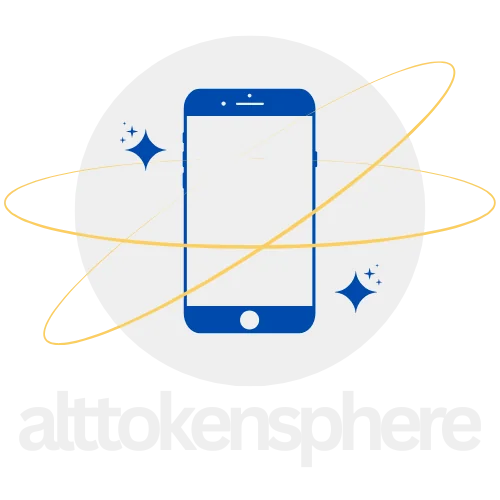Table of Contents
ToggleIn the fast-paced world of SaaS B2B marketing, standing out is a bit like trying to find a needle in a haystack—if the haystack were made of competitors all shouting for attention. With businesses increasingly relying on software solutions, the stakes are higher than ever. It’s not just about having a great product; it’s about how you market it that makes all the difference.
Overview of SaaS B2B Marketing
SaaS B2B marketing focuses on promoting software products designed for business use. Companies face unique challenges when reaching their target audience, primarily due to high competition. Businesses must outline a clear value proposition that resonates with potential clients. Understanding customer pain points helps tailor messaging effectively.
Content marketing plays a vital role in SaaS B2B strategies. It includes writing blogs, creating case studies, and producing webinars that showcase expertise. Engaging content drives organic traffic and encourages leads to explore solutions. High-quality content establishes credibility and builds trust among prospects.
Search engine optimization (SEO) is crucial in increasing visibility. Companies must utilize relevant keywords to optimize web pages. Ranking high in search results attracts businesses searching for appropriate software solutions. Using analytics helps track performance and identify effective strategies.
Leveraging social media can amplify marketing efforts. Platforms like LinkedIn and Twitter allow businesses to connect with decision-makers. Sharing insights, industry news, and success stories fosters engagement and expands reach. Participating in industry-related conversations can enhance a brand’s authority.
Email marketing remains an essential tactic for nurturing leads. Personalized messages that address specific needs increase engagement rates. Informative newsletters can keep potential clients informed about new features or updates. Timely follow-ups can convert interested leads into paying customers.
Partnerships with influencers and industry leaders can enhance credibility. Collaborations with recognized experts help reach a wider audience. Joint webinars and co-authored content can generate interest and trust.
SaaS B2B marketing requires a multi-faceted approach to succeed. By focusing on targeted strategies, businesses can effectively communicate their value to prospects while navigating a competitive landscape.
Key Components of SaaS B2B Marketing

Understanding key components of SaaS B2B marketing is essential for crafting effective strategies. These elements play a pivotal role in reaching and engaging potential clients.
Target Audience Identification
Identifying the target audience is critical for SaaS B2B marketing success. Companies must analyze potential customers’ demographics, industry sectors, and pain points. Surveys and market research yield valuable insights that help define this audience. Segmenting the target market allows tailored messaging that addresses specific needs. Utilizing analytics tools aids in tracking user behavior to refine strategies. Engaging with prospects through forums and LinkedIn groups reveals additional insights. Direct feedback from existing clients further enhances understanding of what resonates.
Value Proposition Development
Developing a compelling value proposition captures potential clients’ attention. Clarity is vital; companies must communicate how their software solves specific problems. Companies should emphasize unique features that differentiate their products from competitors. Strong value propositions often highlight benefits backed by data or case studies. Incorporating testimonials showcases previous successes and builds credibility. Simple language enhances relatability, making complex solutions easier to understand. Crafting multiple variations allows testing to find the most effective messaging. Continuous refinement based on market feedback ensures relevance.
Effective SaaS B2B Marketing Strategies
SaaS B2B marketing demands a multi-layered strategy to effectively reach and engage target audiences. Several key approaches enhance visibility and connection with potential clients.
Content Marketing
Content marketing remains foundational in SaaS B2B strategies. Producing high-quality blogs, insightful case studies, and informative webinars positions companies as industry experts. Establishing credibility hinges on delivering valuable content that addresses customer pain points directly. Engaging articles drive organic traffic while showcasing solutions to common challenges in businesses. Integrating search engine optimization techniques ensures that content ranks well, making it easier for prospects to discover relevant information.
Email Marketing
Email marketing continues to be an essential tool in nurturing leads. Personalized messages resonate more with recipients, increasing open and response rates. Informative newsletters serve to educate potential clients while highlighting product benefits. Sending targeted campaigns helps keep the audience engaged, as well as informed about industry insights and company updates. Tracking open rates and user behaviors enables businesses to refine email strategies for better results over time.
Social Media Engagement
Social media channels, notably LinkedIn and Twitter, amplify marketing efforts by creating direct paths to decision-makers. Sharing meaningful insights and engaging industry news fosters interactions that build relationships. Active participation in relevant discussions showcases expertise and keeps brands visible. Companies can utilize analytics tools to assess audience engagement and adjust strategies accordingly. Building a strong online presence through consistent posting improves brand recognition and trust among potential clients.
Metrics for Measuring Success
Measuring success in SaaS B2B marketing involves analyzing specific metrics that indicate overall performance. Identifying relevant metrics allows companies to assess their marketing effectiveness and impact on growth.
Key Performance Indicators
Key performance indicators serve as essential benchmarks in assessing marketing success. Metrics such as Customer Acquisition Cost (CAC) provide insight into the expense involved in gaining new clients. Tracking Customer Lifetime Value (CLV) illustrates the total revenue expected from a client over their entire relationship with the company. Moreover, conversion rates reveal the percentage of leads that turn into customers, highlighting the effectiveness of marketing strategies. Churn rate, representing the percentage of customers who discontinue service, helps identify retention issues. Monitoring these metrics fosters data-driven decisions to optimize marketing efforts.
Tools for Analytics
Various tools for analytics offer comprehensive insights into marketing performance. Google Analytics captures web traffic and user behavior, revealing which channels drive conversions. HubSpot provides an all-in-one marketing solution, enabling businesses to track campaigns across multiple platforms. Additionally, SEMrush assists in analyzing SEO strategies, helping identify necessary adjustments for better visibility. Mixpanel offers detailed engagement metrics, allowing marketers to understand user interactions within a product. Leveraging these tools empowers businesses to refine strategies and enhance overall effectiveness.
Challenges in SaaS B2B Marketing
SaaS B2B marketing faces several obstacles amid intense competition. Businesses often find it challenging to differentiate their offerings. Clear value propositions become essential for capturing attention in saturated markets. Many companies struggle to articulate their unique selling points effectively.
Identifying and addressing customer pain points is crucial. Failure to understand these issues can lead to ineffective messaging, driving potential clients away. Additionally, creating engaging content requires continuous innovation. Companies must consistently produce blogs, case studies, and webinars that resonate with their audience while showcasing expertise.
Marketing strategies also grapple with evolving consumer behavior. The shift towards digital channels necessitates a strong emphasis on search engine optimization. Relevant keywords and optimized content ensure visibility in crowded search results. Without this focus, brands may disappear behind competitors.
Building relationships on social media presents further challenges. Engaging decision-makers on platforms like LinkedIn and Twitter requires strategic content and active dialogue. Generating meaningful conversations can significantly enhance brand visibility and authority in the industry.
Email marketing remains an integral tactic for nurturing leads. Personalized messages and informative newsletters hold the potential to boost engagement, yet crafting these effectively can be resource-intensive.
Collaborations with influencers and industry leaders demand time and effort but offer substantial rewards. Partnership strategies can amplify reach and credibility when executed thoughtfully.
Lastly, measuring success involves navigating complex metrics. Evaluating key performance indicators such as Customer Acquisition Cost and Customer Lifetime Value is essential for refining marketing efforts. Without a robust analytics framework, businesses might miss valuable insights that drive growth.
SaaS B2B marketing demands a strategic approach to stand out in a crowded marketplace. By focusing on understanding customer pain points and crafting tailored messaging businesses can connect more effectively with their target audience. High-quality content and strong SEO practices are essential for driving organic traffic and establishing credibility.
Engagement through social media and email marketing plays a crucial role in nurturing leads and building relationships with decision-makers. Companies must continuously refine their strategies based on performance metrics to ensure they remain relevant and effective. Embracing a multi-faceted marketing strategy will not only enhance visibility but also foster long-term growth in the competitive SaaS landscape.







